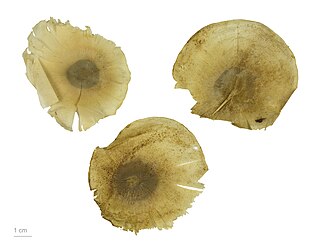
The federative units of Brazil are subnational entities with a certain degree of autonomy and endowed with their own government and constitution, which together form the Federative Republic of Brazil. There are 26 states and one federal district. The states are generally based on historical, conventional borders which have developed over time. The states are divided into municipalities, while the Federal District assumes the competences of both a state and a municipality.

Amazonas is a state of Brazil, located in the North Region in the north-western corner of the country. It is the largest Brazilian state by area and the ninth-largest country subdivision in the world. It is the largest country subdivision in South America, being greater than the areas of Chile, Paraguay, and Uruguay combined. Neighbouring states are Roraima, Pará, Mato Grosso, Rondônia, and Acre. It also borders the nations of Peru, Colombia and Venezuela. This includes the Departments of Amazonas, Vaupés and Guainía in Colombia, as well as the Amazonas state in Venezuela, and the Loreto Region in Peru.

The North Region of Brazil is the largest region of Brazil, accounting for 45.27% of the national territory. It has the second-lowest population of any region in the country, and accounts for a minor percentage of the national GDP. The region is slightly larger than India and slightly smaller than the whole European Union. It comprises the states of Acre, Amapá, Amazonas, Pará, Rondônia, Roraima, and Tocantins.

Hevea is a genus of flowering plants in the spurge family, Euphorbiaceae, with about ten members. It is also one of many names used commercially for the wood of the most economically important rubber tree, H. brasiliensis. The genus is native to tropical South America but is widely cultivated in other tropical countries and naturalized in several of them. It was first described in 1775.

Mabea is a plant genus of the family Euphorbiaceae first described in 1775. It is native to Central and South America as well as Mexico and Trinidad.

Pouteria is a genus of flowering trees in the gutta-percha family, Sapotaceae. The genus is widespread throughout the tropical Americas, with outlier species in Cameroon and Malesia. It includes the canistel, the mamey sapote, and the lucuma. Commonly, this genus is known as pouteria trees, or in some cases, eggfruits.
Oropouche orthobunyavirus (OROV) is one of the most common orthobunyaviruses. When OROV infects humans, it causes a rapid fever illness called Oropouche fever. OROV was originally reported in Trinidad and Tobago in 1955 from the blood sample of a fever patient and from a pool of Coquillettidia venezuelensis mosquitoes. In 1960, OROV was isolated from a sloth and a pool of Ochlerotatus serratus mosquitoes in Brazil. The virus is considered a public health threat in tropical and subtropical areas of Central and South America, with over half a million infected people as of 2005. OROV is considered to be an arbovirus due to the method of transmission by the mosquitoes Aedes serratus and Culex quinquefasciatus among sloths, marsupials, primates, and birds.

Time in Brazil is calculated using standard time, and the country is divided into four standard time zones: UTC−02:00, UTC−03:00, UTC−04:00 and UTC−05:00.

Aspidosperma is a genus of flowering plant in the family Apocynaceae, first described as a genus in 1824. It is native to South America, Central America, southern Mexico, and the West Indies.

Agrias is a genus of Neotropical charaxine nymphalid butterflies found in South and Central America.

Eschweilera is a genus of woody plants in the family Lecythidaceae first described as a genus in 1828. It is native to southern Mexico, Central America, South America, and Trinidad.

Lecythis is a genus of woody plant in the Lecythidaceae family first described as a genus in 1758. It is native to Central America and South America. Several species produce edible seeds and referred to by a variety of common names including paradise nut, monkey pot, cream nut, and sapucaia nut.

Micropholis is genus of trees in the family Sapotaceae, described in 1891.

Pradosia is a genus of plants in the family Sapotaceae described as a genus in 1872.

Couepia is a genus of flowering plants in the family Chrysobalanaceae described as a genus in 1775.

Agrias amydon, the Amydon agrias or white-spotted agrias, is a butterfly of the family Nymphalidae. It is found in Mexico, Central America, and South America.

Agrias hewitsonius is a butterfly of the family Nymphalidae. It is found in South America. It was described by Henry Walter Bates in 1860.

Amazonas Futebol Clube, commonly referred to as Amazonas, is a Brazilian professional club based in Manaus, Amazonas founded on 23 May 2019. It competes in the Campeonato Brasileiro Série B, the second tier of Brazilian football, as well as in the Campeonato Amazonense, the top flight of the Amazonas state football league.



















